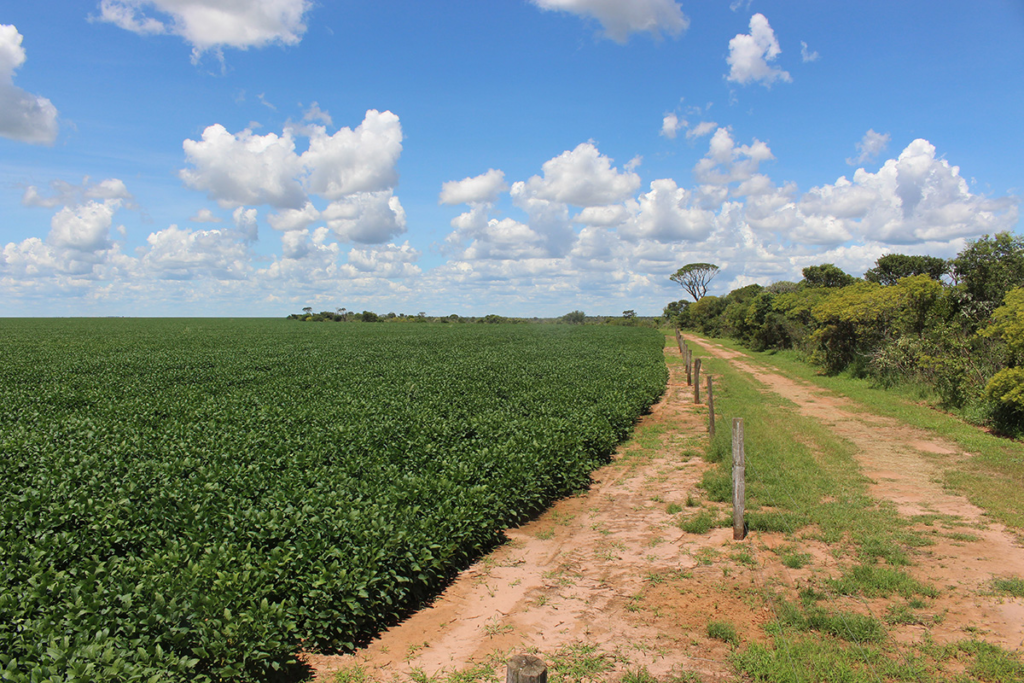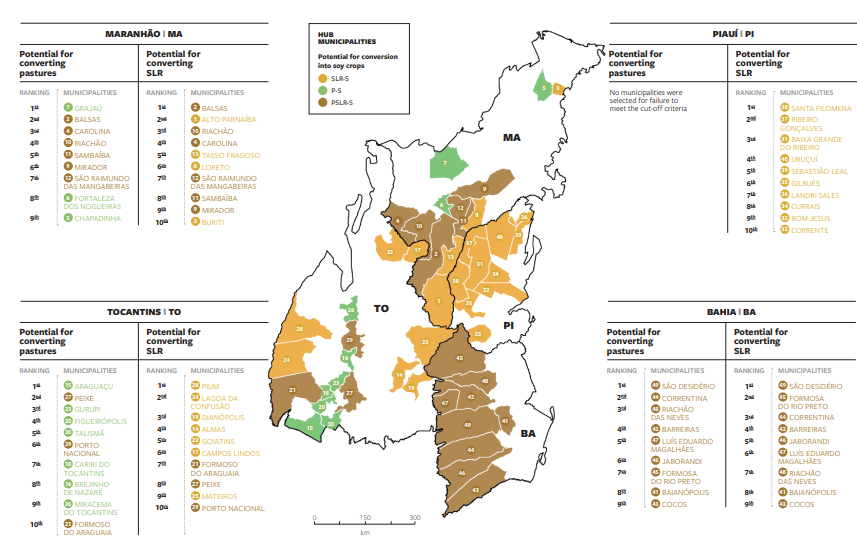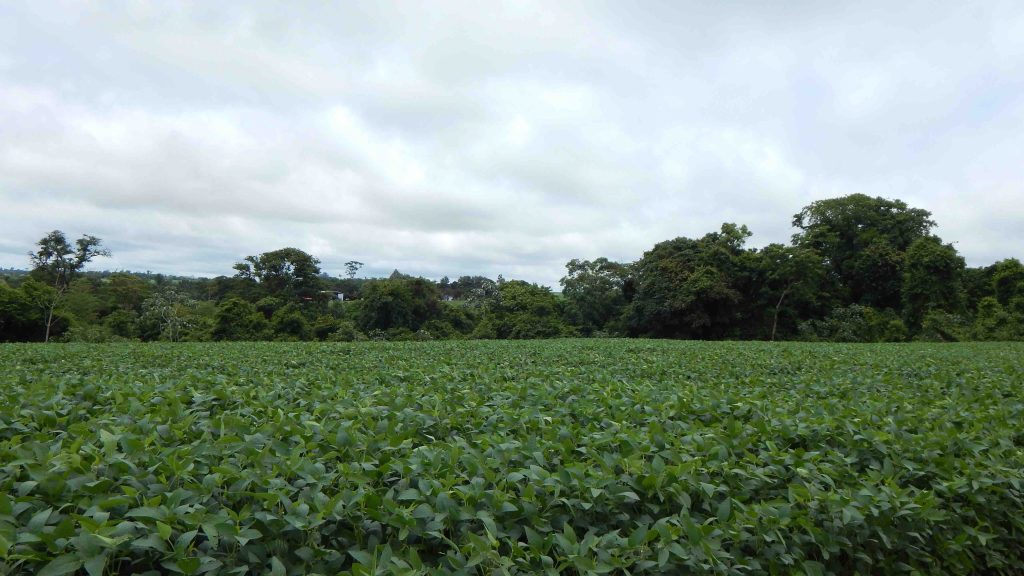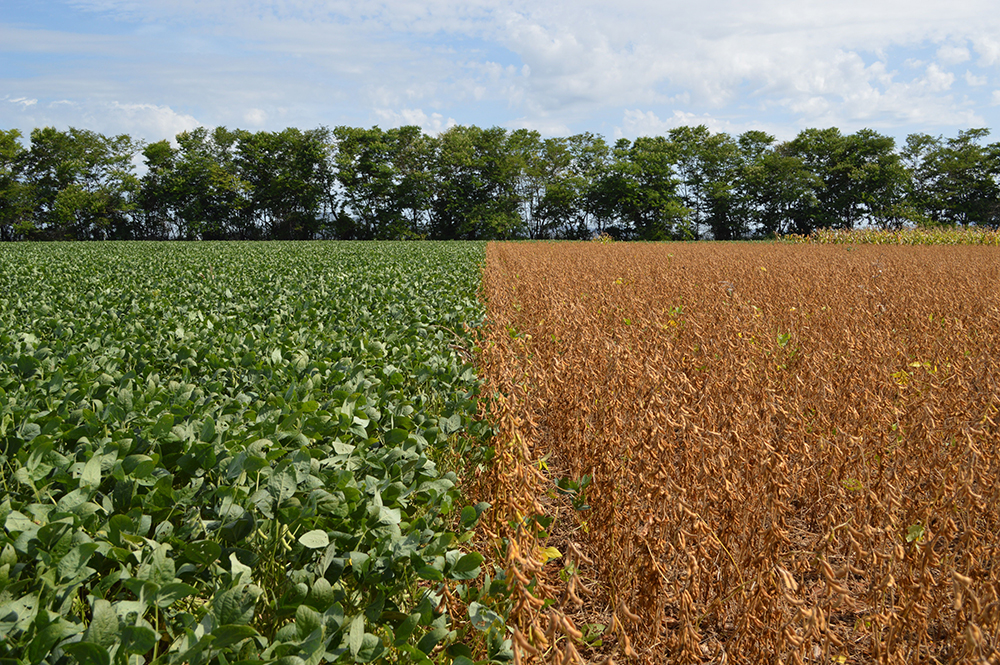Solidaridad conducted a study to identify municipalities within the MATOPIBA region where soy expansion can take place without compromising the conservation of the Cerrado, the second-largest biome in South America, after the Amazon.
According to the Brazilian Ministry of Agriculture, Livestock and Supply, the area allocated to grain production in the MATOPIBA (Maranhão, Tocantins, Piauí and Bahia states in the Cerrado biome) region is expected to increase by 1.1 million hectares by 2030.
“The expansion of soy in MATOPIBA is inevitable,” explained Rodrigo Castro, Brazil country manager, during the launch of the study. “That is why we want to support this expansion to happen in a sustainable and intelligent way, optimizing efficient land use.”

Risk-free soy and beef
Brazil, China and USA connected to increase risk-free sourcing of soy and beef from the Cerrado and the Amazon.
In order to achieve this, Solidaridad performed a study that identified the 49 municipalities with the greatest potential for soy expansion in the next years. They have the capacity to absorb 67 percent of the soy expansion foreseen for MATOPIBA by 2030 in pasture areas, with the least possible impact on native vegetation areas. This is equivalent to 733 thousand of the 1.1 million hectares foreseen by the Brazilian Ministry of Agriculture, Livestock and Supply.
The study shows that there are four million hectares of degraded pastureland in the whole MATOPIBA region. From these, 2.5 million hectares are suitable for agriculture and could be used for soy expansion, just considering areas with at least 100 hectares of continuous extension.

Arnaldo Carneiro, former researcher at the National Institute for Amazon Research (INPA) and co-author of the publication, also stated during the launch event:
We have known for a decade that expanding soy cultivation in Cerrado’s pastures is an opportunity. What is interesting about Solidaridad’s study is that it focuses on MATOPIBA. The study provides a surgical precision regarding the areas of pasture with potential for soy expansion.
Arnaldo Carneiro, researcher and co-author of the publication
Based on these data, the expansion strategy suggested by Solidaridad promotes the conversion of degraded pastures, in combination with livestock intensification and the adoption of mechanisms to encourage the conservation of native vegetation.
This is in line with changes in land use for grain production in MATOPIBA. Although between 2001 and 2014 the expansion of soy occurred mainly in areas of native vegetation, between 2014 and 2019, this trend was reversed and more than 80% of the expansion began to happen without conversion of vegetation, taking advantage of already open areas for other crops or pastures.

Soy farmers make an impact
The World Business Council for Sustainable Development’s (WBCSD) Soft Commodities Forum (SCF) and Solidaridad are working with farmers in the Cerrado region of Brazil to adopt more sustainable farming practices.
Bernardo Pires, Sustainability Manager of the Brazilian Association of Vegetable Oil Industries (Abiove), another guest at the launch of the study, contributed his opinion on the latter:
“It is necessary to provide alternatives to rural producers. In my opinion, the best thing is to encourage expansion over areas that have already been intervened and develop mechanisms to conserve native vegetation that can be legally converted. For this we must also change the culture in Brazil, where the land with vegetation coverage is considered ‘dirty’ and is worth nothing, while the land without vegetation is considered ‘clean’ and triples its worth. In order to move forward, it is necessary to change this way of thinking, showing that the land that they see as ‘dirty’ provides biodiversity, water, carbon and is worth a lot. But for this we need the involvement of everyone: consumers, civil society and the government.”
ABOUT THE SOYBEAN PROGRAM IN BRAZIL
The soy program in Brazil began in 2010 to contribute to the sustainability of the chain in different biomes. The program has been active in MATOPIBA since 2018 with the support of the Norwegian International Climate and Forest Initiative (NICFI), where it promotes low-carbon agriculture through more efficient land use.
In the west of the State of Bahia, specifically, with the support of the Soft Commodities Forum (SCF), the program assessed producers’ needs to expand their production sustainably, while maintaining their productivity. Now, Solidaridad is working to establish carbon balance metrics adapted to the territory. This project is supported by the Land Innovation Fund and has the participation of the Associação de Agricultores e Irrigantes da Bahia (AIBA).
Read this article in Spanish and, a more detailed version in Portuguese.

